Team members
Names / Roles: Group 5
- Khaireen (leader)
- Chui Si Yi (Wiki writer) Temperate forest
- Adam (Researcher)
- Teng Kwok (Researcher)
- Syafiqah (Researcher)
Overview
- Location of the ecosystem:Temperate Forest are located at temperate countries like United States, Canada, Europe, parts of Russia, China, and Japan.
 A map that shows where temperate forest are located
A map that shows where temperate forest are located
- Description of ecosystem:
The temperate forest biome is found in regions where winters are cold and summers are warm. Regions with this climate are common in the mid-latitudes, far from both the equator and the poles. Temperate forests are almost always made of two types of trees, deciduous and evergreen. Deciduous trees are trees that lose their leaves in the winter. Evergreens are trees that keep their leaves all year long, like pine trees. Forests can either have deciduous trees, evergreens, or a combination of both. Another kind of forest is a temperate rain forest. These are found in California, Oregon and Washington in the United States. .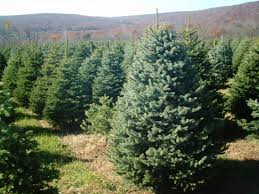 Evergreen trees in a temperate forest.
Evergreen trees in a temperate forest.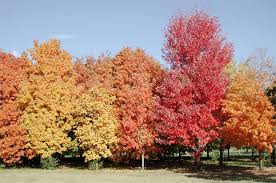 Deciduous trees in a temperate forest. Biodiversity of ecosystem (richness of life in ecosystem):
Deciduous trees in a temperate forest. Biodiversity of ecosystem (richness of life in ecosystem):
The temperate forest is important because of its biodiversity. It is home to many species of trees and plants. The only parts of the world that have more tree species are the tropical rain forests. When it comes to animals, there aren’t a lot of large mammals in the forests, but there are a lot of smaller animals like squirrels and chipmunks. There are many reptiles in the temperate forests, especially the salamander. Even though many birds migrate south during the winter, there are lots of species of birds in the forest during the summer.

Physical Factors
Search the Internet for information on the following physical factors in the allocated ecosystem.
- Light (availability of sunlight in the ecosystem),
Temperature (temperature of the ecosystem),: -30°C to 30°C, yearly average is 10°forest
Water (water quality in the ecosystem),:750 to 1,500 mm of rain per year.
Air (quality of air in the ecosystem),
Classification of Living Organisms
Classify at least eight of the living organisms found in the allocated ecosystem into the categories below:
- Producers: Shrubs , grasses , frens , flowers , oaks , maple trees , beech trees.
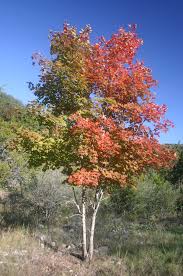 Maple tree
Maple tree 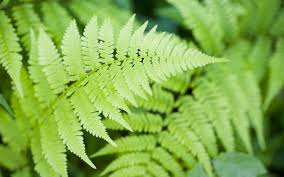 Ferns
Ferns Flowers
Primary Consumers:Rodents , deer , insects , birds , beetles , catapillars , squirrels
Flowers
Primary Consumers:Rodents , deer , insects , birds , beetles , catapillars , squirrels
Bird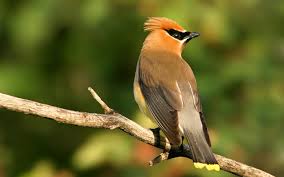
Secondary Consumers:Foxes , deers , owls , skunks , weasels ,raccoons
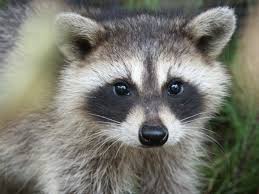 Raccoon
Raccoon
Tertiary Consumers:Cougar , bears , wolves
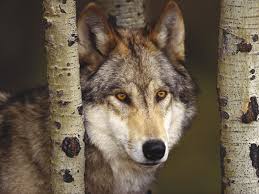 Wolves
Wolves 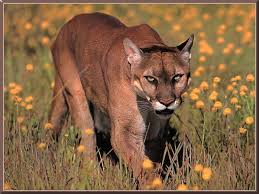 Cougar
Cougar
Decomposers:Fly maggots , fungi , earth worm
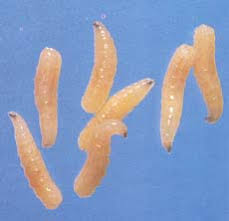 Fly maggots
Fly maggots
For each of the living organism, find a picture and write a short description on the organism. You may wish to include feeding habits, region in the ecosystem where it d etc.
Deer are members of the order Artiodactyle, which means that they have hoofs with an even number of toes.
Deer can be found around the world. They are native to all continents except for Australia and Antarctica. There are about 100 types of deer, including the whitetail deer, reindeer, elk, moose, mule deer, blacktail deer and caribou.
Male deer are called bucks, bulls, stags or harts. Female deer are called does, cows or hinds. Young deer are called fawns or calfs.
Deer can adapt well to just about any habitat. They prefer to live in "edge" habitats. Edges are human-made or natural habitat breaks, for instance from woods to croplands. They will use the woodlands for cover and shelter and the open land to graze in. In northern latitudes, deer may live in different areas in the summer and winter months. These areas can be as far as 30 miles apart.
Deer are the only animals that have antlers. They are the fastest growing living tissue on earth. Antlers are usually only found on males. In some species, like caribou, you will also find them on females. Moose have the largest antlers. Antlers grow from spring until fall. While growing, antlers are covered with a soft tissue known as velvet. This tissue contains a network of nerves and blood vessels and is very sensitive. In the fall, the velvet is shed and the antlers harden. In the winter, the antlers are shed. Antlers should not be confused with horns. Horns are never shed and continue to grow throughout the animal's life. If they are broken, they won't grow back.
Bandit-masked raccoons are a familiar sight just about everywhere, because they will eat just about anything. These ubiquitous mammals are found in forests, marshes, prairies, and even in cities. They are adaptable and use their dexterous front paws and long fingers to find and feast on a wide variety of fare.
In the natural world, raccoons snare a lot of their meals in the water. These nocturnal foragers use lightning-quick paws to grab crayfish, frogs, and other aquatic creatures. On land, they pluck mice and insects from their hiding places and raid nests for tasty eggs.
Raccoons also eat fruit and plants—including those grown in human gardens and farms. They will even open garbage cans to dine on the contents.
These ring-tailed animals are equally opportunistic when it comes to choosing a denning site. They may inhabit a tree hole, fallen log, or a house's attic. Females have one to seven cubs in early summer. The young raccoons often spend the first two months or so of their lives high in a tree hole. Later, mother and children move to the ground when the cubs begin to explore on their own.
Raccoons in the northern parts of their range gorge themselves in spring and summer to store up body fat. They then spend much of the winter asleep in a den. There are six other species of raccoons, in addition to the familiar northern (North American) raccoon. Most other species live on tropical islands.
Weasel is a common name for about 12 species of mammals in the genus Mustela of the Mustelidae family. They are found throughout North America, Asia, Africa, South America, and Europe. Weasels are in the family Mustelidae of the order Carnivora (they are carnivores)
Originally, the name "weasel" was applied to one species of the genus, the European form of the Least Weasel (Mustela nivalis). Early literary references to weasels, for example their common appearances in fables, refer to this species rather than to the genus as a whole, reflecting what is still the common usage in the United Kingdom. In technical discourse, however, as in American usage, the term "weasel" can refer to any member of the genus, or to the genus as a whole. Of the 16 extant species currently classified in the genus Mustela, ten have "weasel" in their common name. Among those that do not are the stoat or ermine, two species of mink, and three species of ferrets.
Animals in the weasel family - Ferret, stoat, polecat, mink, ermine, black-footed ferret, long tailed weasel, least weasel. Other relatives of the weasels are martens, otters, badgers, and wolverines. The terms stoat and ermine are terms for the long tailed and short tailed weasels in their winter coats.
Weasels vary in length from fifteen to thirty-five centimeters (six to fourteen inches), and usually have a light brown upper coat, white belly and black fur at the tip of the tail; in many species, populations living at high latitudes molt to a white coat with black fur at the tip of the tail in winter. They have long slender bodies, which enable them to follow their prey into burrows. Their tails are typically almost as long as the rest of their bodies.
The cougar, which is also commonly referred to as a puma, mountain lion or panther, is the second largest cat in North America. Unlike other big cats, however, the cougar cannot roar. Instead, the large feline purrs like a house cat.
Cougars also have similar body types to house cats, only on a larger scale. They have slender bodies and round heads with pointed ears. They vary between 1.5-2.7 m (5-9 ft.) from head to tail. While males can weigh up to 68 kg (150 lb.), females weigh less, topping out at nearly 45 kg (100 lb.).
The coat of the cougar is a grayish tan to reddish color with lighter parts on the underside. The tail has a black spot on the end.
Inhabiting various ecosystems from mountains to deserts to sea-level, the cougar’s range includes western North America, a small region in Florida, and most of South America. They make their home anywhere that there is shelter and prey.
Generally they prey on deer but also feed on smaller animals if necessary, including domestic animals and livestock. Cougars have even been known to eat insects. Skilled and cunning hunters, cougars stay hidden from their prey until they can pounce with claws out-stretched. Cougars can also climb with ease and leap over 6 m (20 ft.). After killing a large animal, a cougar hides the carcass and eats in the coming days.
Food Web
Create a food web using at least eight of the living organisms listed above. You may wish to use Microsoft PowerPoint to create your food web. Save your food web as a picture. Finally copy and paste your picture in this section of your wiki. 
Interrelationship in Ecosystem
Give at least one example for each of the following relationships in the ecosystem:
- Predator-prey relationship:A predator is an organism that eats another organism. The prey is the organism which the predator eats.Examples of predator and prey are fox and rabbit, bear and fish, and lion and zebra. The words "predator" and "prey" are almost always used to mean only animals that eat animals
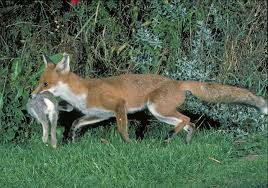
A parasitic relationship is one in which one organism, the parasite, lives off of another organism, the host, harming it and possibly causing death. The parasite lives on or in the body of the host.
A few examples of parasites are tapeworms, fleas, and barnacles. Tapeworms are segmented flatworms that attach themselves to the insides of the intestines of animals such as cows, pigs, and humans. They get food by eating the host's partly digested food, depriving the host of nutrients. Fleas harm their hosts, such as dogs, by biting their skin, sucking their blood, and causing them to itch. The fleas, in turn, get food and a warm home. Barnacles, which live on the bodies of whales, do not seriously harm their hosts, but they do itch and are annoying.
- Mutualism:
A mutualistic relationship is when two organisms of different species "work together," each benefiting from the relationship. One example of a mutualistic relationship is that of the oxpecker (a kind of bird) and the rhinoceros or zebra. Oxpeckers land on rhinos or zebras and eat ticks and other parasites that live on their skin. The oxpeckers get food and the beasts get pest control. Also, when there is danger, the oxpeckers fly upward and scream a warning, which helps the symbiont (a name for the other partner in a relationship).
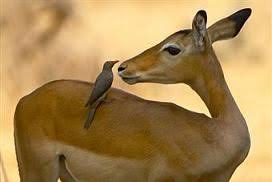
Useful Links
Plagarism is a strongly discouraged.
Include the links of all websites you obtained information from to complete your ecology wiki.
For example:
Wild World @ nationalgeographic.com ( http://www.nationalgeographic.com/wildworld/terrestrial.html )
Comments (0)
You don't have permission to comment on this page.